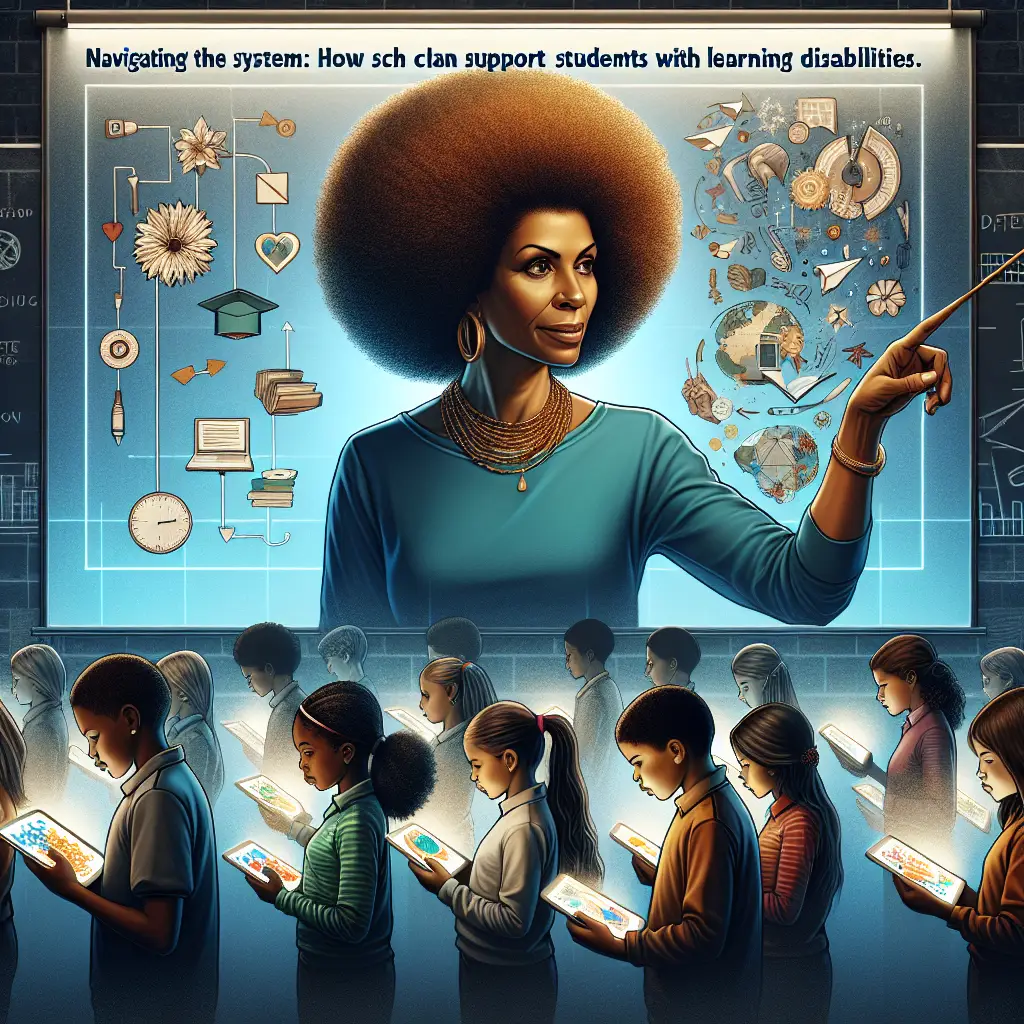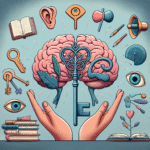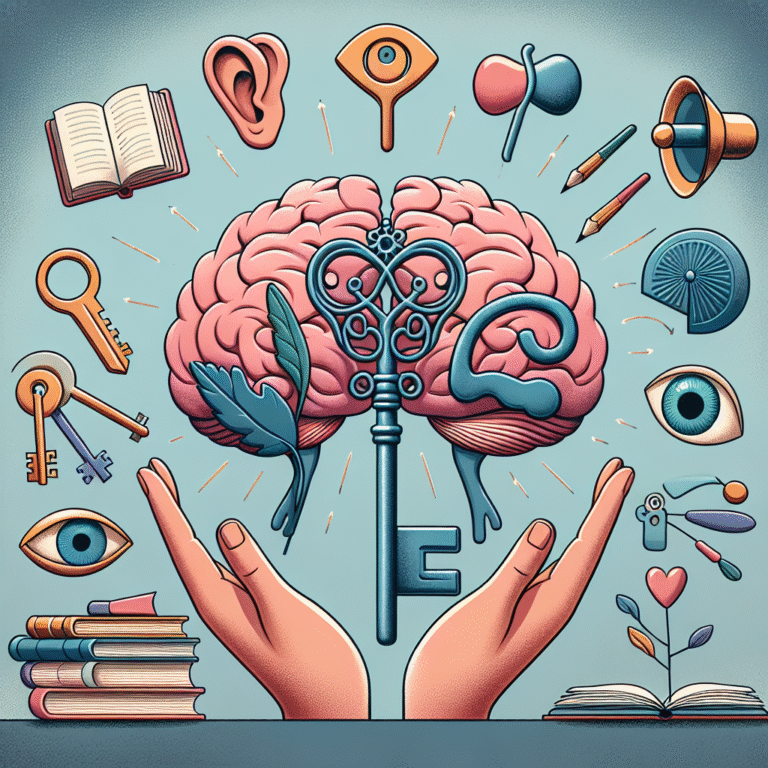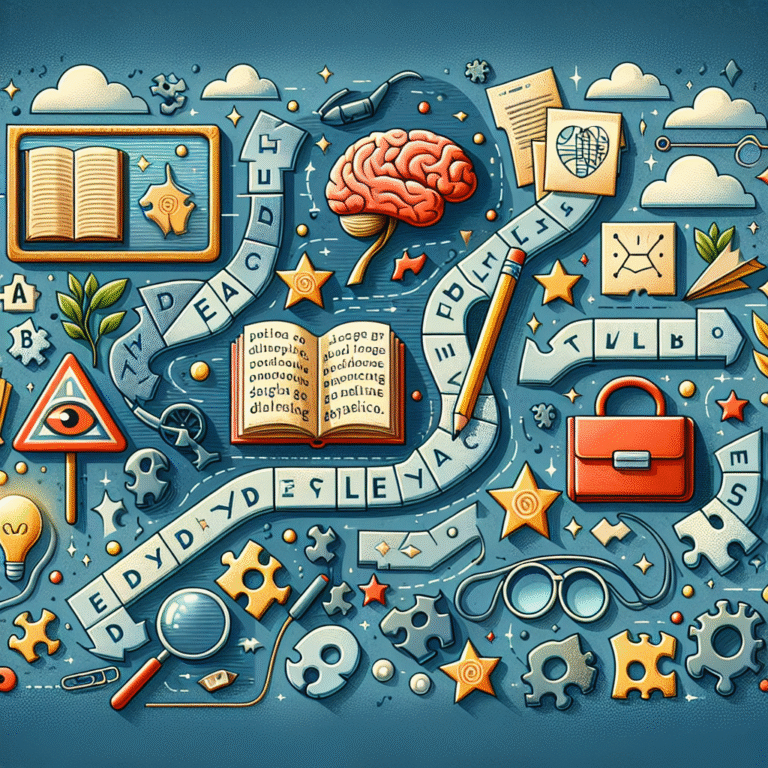
Navigating the System: How Schools Can Support Students with Learning Disabilities — The Ultimate Guide
Introduction
In today’s educational landscape, the call for inclusivity has never been more urgent. In the United States alone, approximately 1 in 5 children has a learning disability, making it essential for schools to implement effective support systems. Navigating the System: How Schools Can Support Students with Learning Disabilities is not merely a guideline; it’s a roadmap that can transform lives.
When students face challenges that hinder their learning, their potential often goes unrecognized. The emotional and academic toll can be substantial, leading to disengagement and a struggle that extends beyond the classroom. Schools have the opportunity—and responsibility—to be a beacon of hope, guiding these students through their unique educational journeys. In this article, we’ll explore key strategies, case studies, and actionable insights that schools can implement to support students with learning disabilities effectively.
Understanding Learning Disabilities
What Are Learning Disabilities?
Before we can delve into the specifics of support systems, it’s vital to understand what learning disabilities are. According to the National Center for Learning Disabilities (NCLD), they include a range of disorders that affect the ability to read, write, speak, and do math. Some common types are:
- Dyslexia: Affecting reading skills
- Dysgraphia: Affecting writing abilities
- Dyscalculia: Affecting math skills
- Auditory Processing Disorder: Difficulty in processing sounds
Understanding these disabilities is crucial for educators to develop tailored support strategies.
Importance of Early Detection
Identifying learning disabilities early can lead to timely interventions that support students effectively and enhance their learning experiences. Schools can implement regular screening processes that can help to detect issues before they escalate.
| Type of Learning Disability | Common Signs | Early Intervention Strategies |
|---|---|---|
| Dyslexia | Difficulty reading fluently | Use phonics-based reading programs |
| Dysgraphia | Trouble with handwriting | Implement technology tools for writing |
| Dyscalculia | Struggles with math tasks | Use manipulatives and visual aids |
| Auditory Processing Disorder | Difficulty following verbal instructions | Use clear, written instructions |
This table illustrates that early detection not only enables schools to support students more effectively but can also equip them with the skills they need for lifelong learning.
Navigating the System: Accessing Resources
1. Understanding Individualized Education Programs (IEPs)
Under the Individuals with Disabilities Education Act (IDEA), students with learning disabilities have the right to an Individualized Education Program (IEP). This essential tool allows educators to create a tailored educational approach based on a student’s unique needs.
Key Components of an IEP:
- Current Performance Levels: A comprehensive overview of the student’s current academic status.
- Measurable Goals: Short-term and long-term goals tailored for the student.
- Specialized Instruction: Specific strategies and methods to enhance learning.
The IEP should be a living document, updated regularly to reflect the student’s progress and changing needs.
2. 504 Plans: An Alternative Support System
Not every student requiring support will qualify for an IEP. For those who don’t, a 504 Plan offers accommodations to ensure equal access to education. This might include:
- Extended time on tests
- Modified classroom assignments
- Access to assistive technologies
Schools must be proactive in offering these alternatives to ensure that no student is left behind.
Building a Supportive School Culture
3. Professional Development for Educators
Teachers are at the forefront of supporting students with learning disabilities. Ongoing professional development is crucial for equipping them with the tools they need. By investing in targeted training on learning disabilities, school administrators can empower educators with the knowledge needed to navigate the system effectively.
Recommended Training Topics:
- Understanding different types of learning disabilities.
- Implementing evidence-based instructional strategies.
- Developing strong relationships with students and families.
4. Creating an Inclusive Classroom Environment
Creating an inclusive classroom environment requires a commitment from both educators and students. Here are some strategies to foster inclusion:
- Flexible Grouping: Utilize mixed-ability groups to encourage peer support.
- Use of Technology: Incorporate tools that cater to diverse learning styles, such as audiobooks and speech-to-text software.
- Positive Reinforcement: Celebrate small successes to boost confidence.
Schools should embed a culture of respect and understanding that enhances the learning experience for all students, particularly those with learning disabilities.
Engaging Families in the Journey
5. Parent and Family Involvement
Families play a critical role in the educational journey of students with learning disabilities. Schools should develop partnerships with parents to foster an environment that nurtures learning at both home and school. Regular communication can lead to more effective support strategies.
Strategies for Engagement:
- Host workshops that educate parents about learning disabilities and effective advocacy.
- Invite parents to participate in IEP meetings to ensure their voices are heard.
- Create resources that parents can use at home.
A collaborative approach can significantly enhance a student’s learning outcomes.
Collaborating with Specialists
6. Utilizing Support Staff and Specialists
Collaboration is key when it comes to supporting students with learning disabilities. Involving special education teachers, speech therapists, and counselors can help create a more holistic approach. Regular team meetings can foster an open dialogue about student progress and shared strategies.
Case Study: A Success Story
In a mid-sized school district, educators found that collaboration among general education teachers and special education staff was lacking. By implementing weekly strategy sessions, they increased the sharing of resources and information. Over one academic year, the district reported a 25% improvement in standardized test scores among students on IEPs. This illustrates how Navigating the System: How Schools Can Support Students with Learning Disabilities requires a combined effort.
7. Implementing Peer Mentoring Programs
Peer mentoring can boost the confidence of students with learning disabilities. By pairing them with peers who can offer guidance, schools can create valuable relationships that bolster learning.
Example Program: Buddy System
One school successfully matched students with learning disabilities with "buddies" from the upper grades. This program not only provided academic support but also fostered social connections, improving overall school engagement.
Measuring Success
8. Assessing Progress and Outcomes
How can schools measure their effectiveness in supporting students with learning disabilities? Regular assessments are key.
Assessment Techniques:
- Formative Assessments: Regular check-ins that inform instructional practices.
- Summative Assessments: End-of-term evaluations that measure overall progress.
Schools should analyze trends in data to make informed decisions about future interventions and resource allocations.
Conclusion
Navigating the System: How Schools Can Support Students with Learning Disabilities is both an imperative and achievable goal. By understanding learning disabilities, utilizing IEPs and 504 Plans, engaging families, and fostering collaboration among educators, schools can create an environment where every student thrives.
It’s not just about meeting academic benchmarks; it’s about fostering resilience, hope, and a love for learning. With the right strategies and a shared commitment, we can pave the way for students with learning disabilities to reach their full potential.
FAQs
1. What are the signs of a learning disability in children?
Common signs may include difficulties with reading, writing, math, and following instructions. Affected children may also experience frustration and reluctance toward schoolwork.
2. How can I get my child evaluated for a learning disability?
Parents can request an evaluation through their child’s school. The school is legally obligated to assess the child if there are concerns about their learning.
3. What accommodations can schools offer students with learning disabilities?
Accommodations can include extended testing time, reduced homework loads, and access to assistive technology.
4. What is the difference between an IEP and a 504 Plan?
An IEP is a comprehensive program for students who qualify under IDEA, including specific goals and services, while a 504 Plan provides an accommodation to ensure equal access but does not include the extensive services required in an IEP.
5. Are parents involved in the IEP process?
Yes, parents are vital stakeholders in the IEP process and should be active participants in meetings, providing input about their child’s strengths, needs, and progress.
6. How can teachers create an inclusive classroom?
They can employ various instructional strategies, ensure access to resources, and foster a supportive classroom environment that respects diverse learning needs.
This comprehensive guide not only explores the critical aspects of supporting students with learning disabilities but also provides actionable insights and real-world applications that educators and schools can implement. By prioritizing collaboration, inclusion, and family engagement, we can ensure effective navigation of the educational system for all students.






